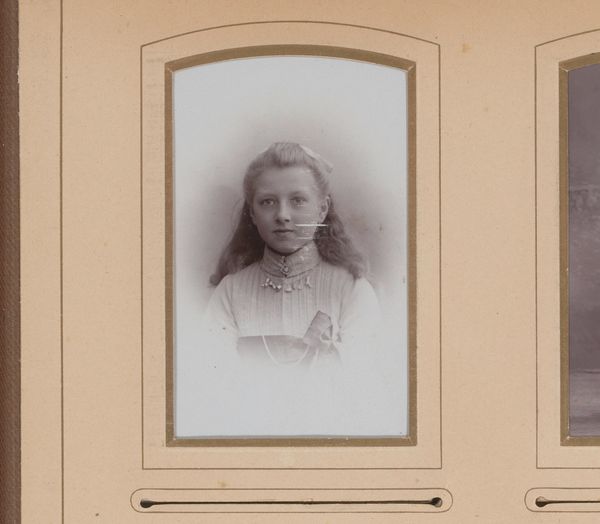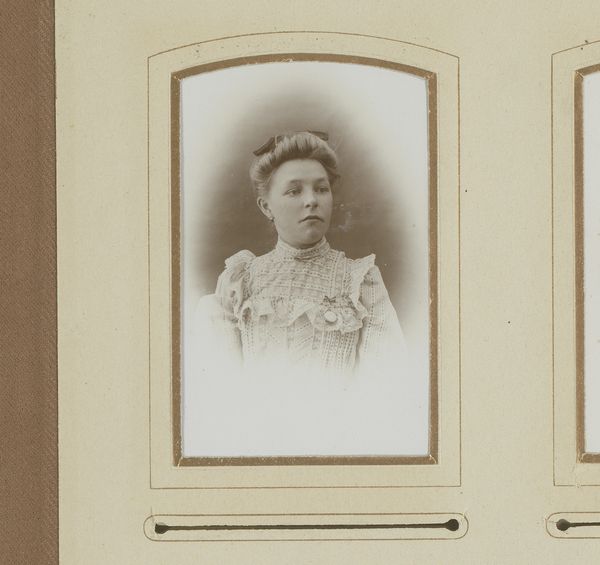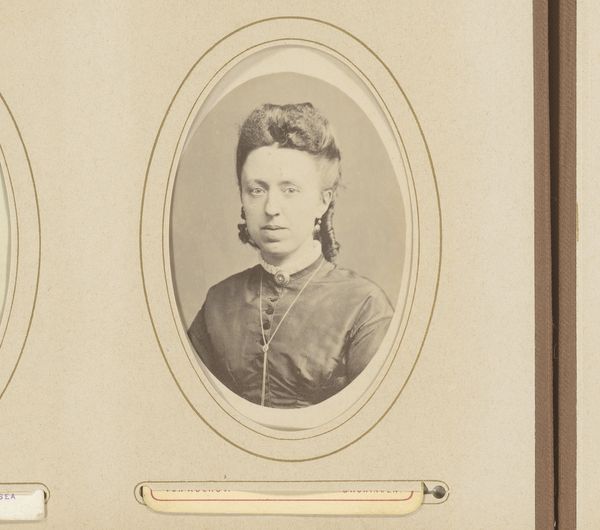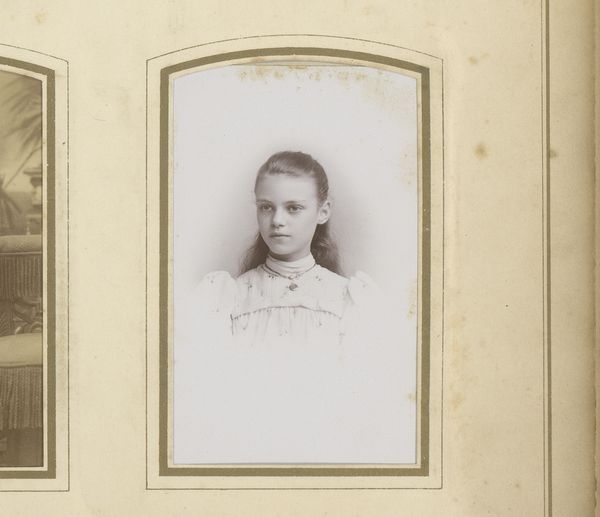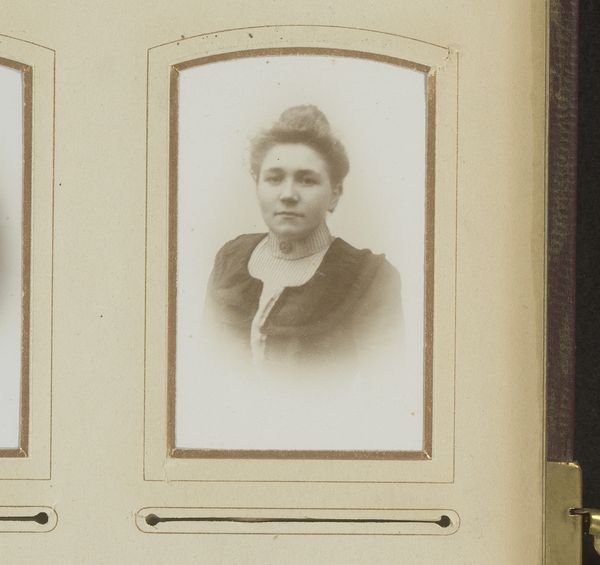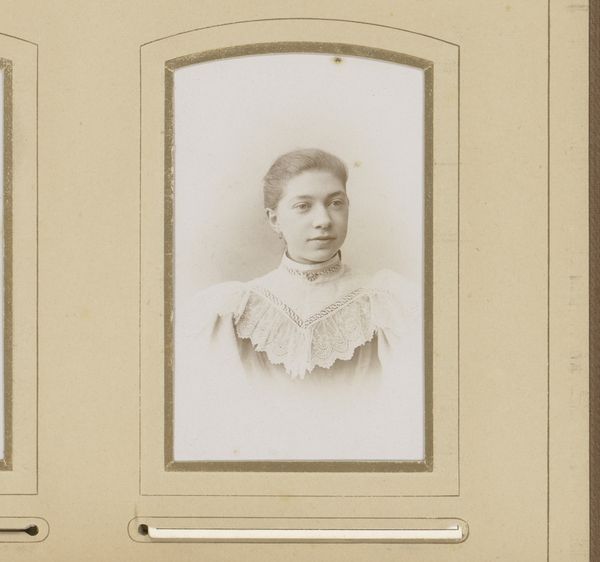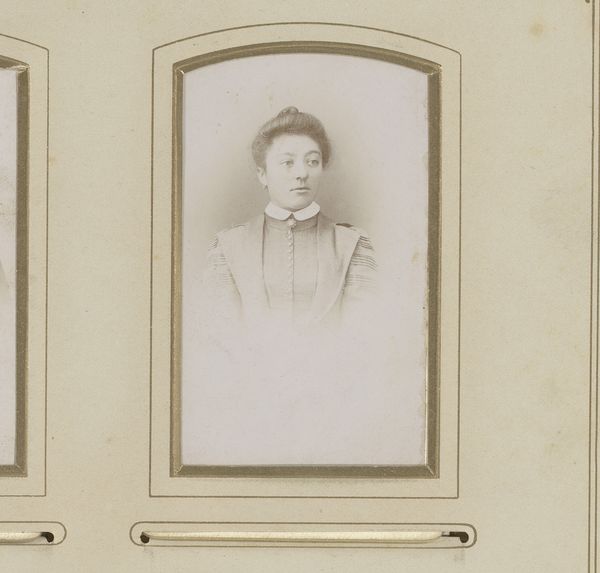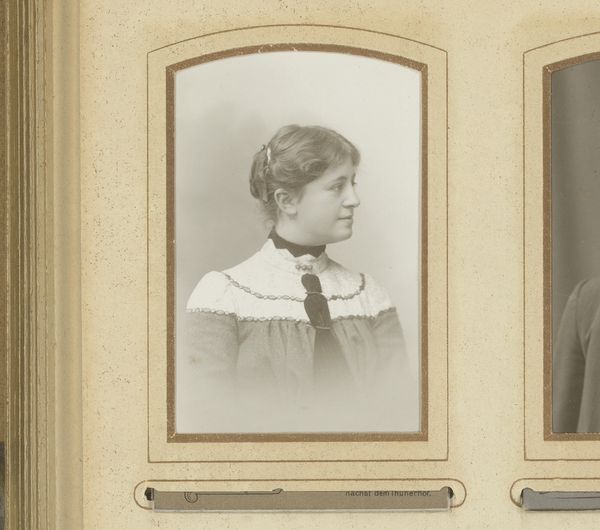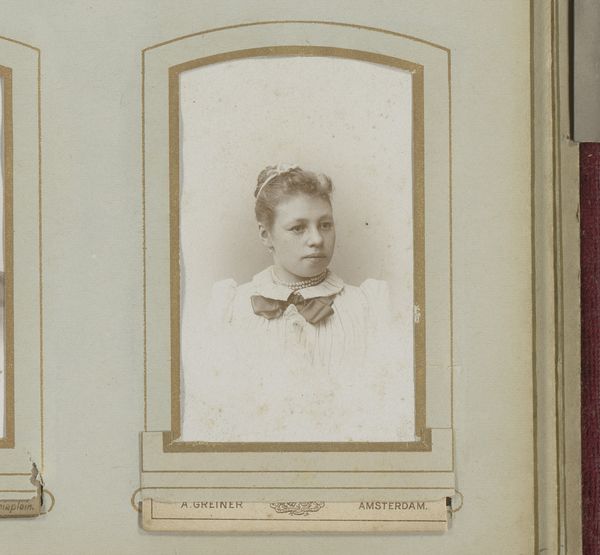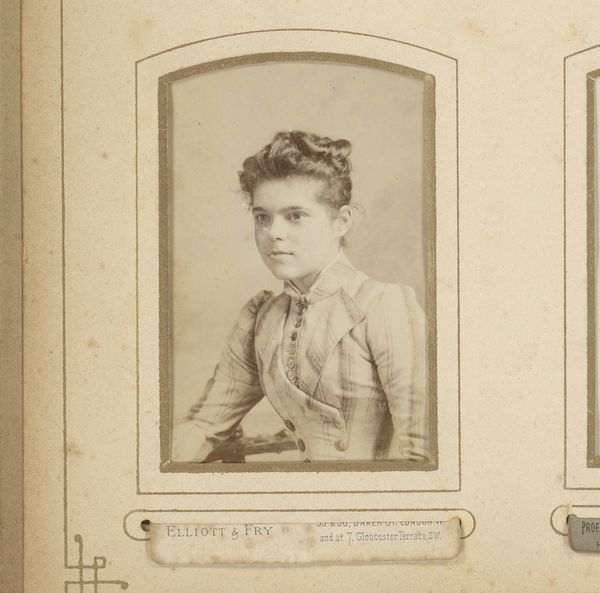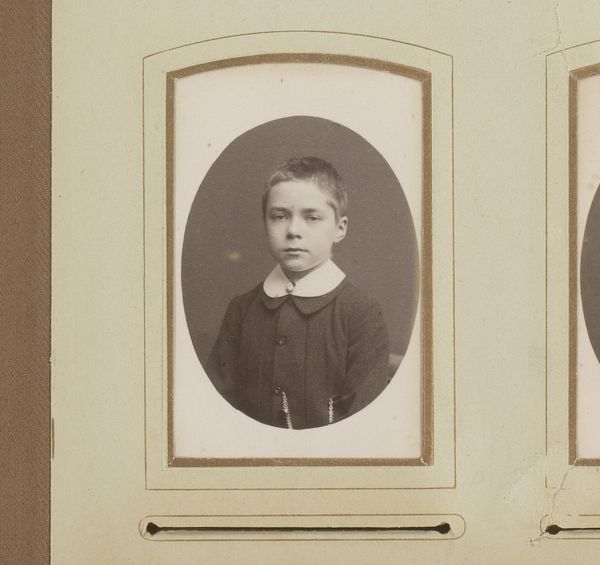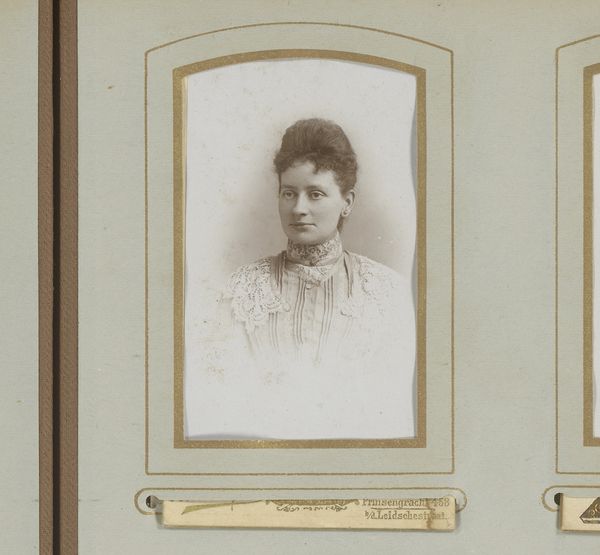
photography
#
portrait
#
photography
#
realism
Dimensions: height 84 mm, width 51 mm
Copyright: Rijks Museum: Open Domain
Curator: This albumen print, called "Portret van een meisje," was created sometime between 1883 and 1887. It resides here at the Rijksmuseum. What do you make of it? Editor: There's a certain vulnerability in the young girl's gaze. She seems caught between childhood and adulthood, a fleeting moment perfectly captured. Curator: Note the tight framing. It places emphasis firmly on the face, directing our vision in accordance with established visual hierarchies, particularly regarding portraiture. It adheres to realist aesthetics by using a common portrait framing of the day, though there are also considerations made with the use of soft gradations and lighting in printing to portray the model attractively. Editor: The oval shape of the frame itself—part of the larger photo album page, I believe—conjures notions of sentimentality, of precious memories carefully preserved. It transforms the subject into an almost archetypal figure of youth and innocence, in a way reminiscent of earlier portrait miniatures. The color, almost a monochromatic beige, reminds me of other photographs in similar settings. The fact that its only of her upper chest adds another dimension to its possible interpretations. Curator: Precisely. The compositional decision limits spatial context, pushing us to focus more directly on facial expression and form. Further, the simplicity of the light and shadow creates tonal values that communicate depth without relying on a broad range of colors. Editor: And I'm particularly drawn to the girl's attire. The lace collar and ribbon, although modest, hint at societal expectations, almost an expectation of maturity being prematurely imposed. The neutral colors evoke a sense of purity and naivete, typical of this time frame. It also brings up questions, or musings of what lies beyond the captured moment. Her stare, though seemingly reserved, also contains a subtle yearning or hope. Curator: You raise a compelling point about cultural symbolism. It would be worthwhile to consider how costume contributes to the construction of identity—especially given that photography was still gaining social acceptance in the 1880s as a respectable art form capable of capturing not only likeness but also character. Editor: It all converges to give a melancholic, reflective impression—it's like stepping into a memory, carefully preserved and yet inevitably distant. I admire the balance between aesthetic control and evocative feeling. Curator: Indeed, seeing the image today creates another perspective shift, looking into both aesthetic considerations as well as symbolic representations of the late 19th Century.
Comments
No comments
Be the first to comment and join the conversation on the ultimate creative platform.
